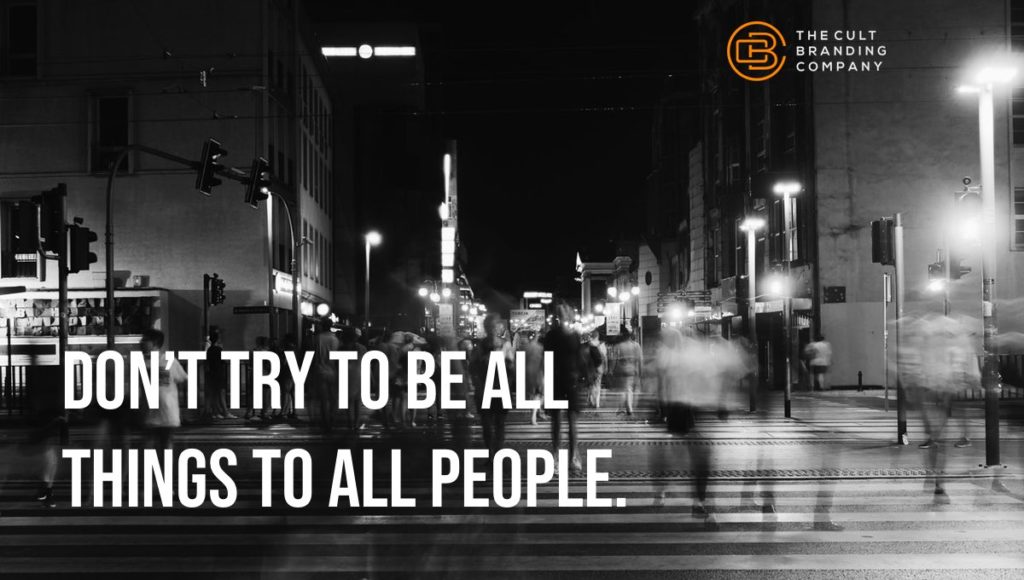
Marketing used to be fairly straightforward: Throw money at advertising in order to influence people to buy your products and services. If your advertising campaign was decent, the resulting sales outweighed the cost of advertising. If your campaign was excellent, your business grew like a wildflower.
Fast forward to today: The customer is now in control. Media fragmentation from hundreds of cable networks, millions of Web sites. mobile devices in every hand, and social media make it more difficult to reach the general market. And even if you do reach your potential customers, they don’t have to listen, and probably won’t. What’s an intelligent marketer to do?
Five ways to tap into your most profitable customers
1) Understand what branding is really all about.
Management guru Peter Drucker explained that the purpose of business is to create a customer.1 In contemporary marketing, your job is to create a repeat customer who is likely to build a relationship with you and buy from you year after year. In order to accomplish this magnificent feat, you must develop what’s called a brand. A brand is an association that a customer has with certain feelings and images represented by a company, not simply a company name or a logo. You cannot create a brand by yourself because branding is a co-authored experience between you and your customers.
When a group of customers has strong associations between your brand and a desired feeling, the brand has “equity” it can leverage in order to grow.
2) Focus on your best customers.
The secret ingredient to a sustainable enterprise is called Brand Lovers: The customers who love you the most. Brand Lovers emotionally connect with what you do and they want to celebrate who you are. Their connection with your brand is so strong that they often don’t consider doing business with anyone else. Apple’s Mac users, for example, don’t consider purchasing a PC. To them, there is no alternative.
At the very least, your Brand Lovers choose you more often than your competitors. For many companies, the best customers drive a significant part of their profitability—both through purchasing and by acting as evangelists to convert other people into customers—and yet the business generally knows very little about them. Basic market research does not offer you insights into your best customers. The true drivers of choice for your best customers are emotional connections to your brand.
Certain brands have a legion of Brand Lovers – we call them Cult Brands. In a Cult Brand like Apple, CEO Steve Jobs knew he was selling a unique way of life that’s intelligent, creative, and special—he wasn’t just selling computers, digital music players, and mobile phones. Oprah turned herself into a Cult Brand by being is far more than just another talk show host: real, honest and loving, Oprah radiates hope and the promise of a better tomorrow.
3) Identify your Brand Lovers.
Perhaps your enterprise doesn’t have Brand Lovers like Apple or Oprah, but you do have your best customers – customers who give you repeat business and who may tell their friends and colleagues about your brand.
So how do you find your best customers? Actually, they often find you. They congregate at your stores. They send you e-mails and call you from time to time to tell you how great you’re doing. Some customers might even blog about your products or services or create videos and post them on social media.
On the financial side, if you maintain a customer database, you can sift through and determine who purchases from you with the greatest frequency – and for the longest time span.
What if none of the above helps you locate them? Then get creative. Carefully crafted surveys might point you in the right direction or you may need to hire a firm to help you identify who your best customers are.
4) Get to know your Brand Lovers.
Talk to them. Find out why they keep doing business with you. Don’t be afraid to ask. But listen carefully.
Look for the intangible clues that make you unique in your customers’ eyes. Uncover the emotional effect you have on them.
5) Serve your Brand Lovers better than anyone else.
There are always ways to grow your business by embracing your best customers. The answers don’t have to be complex. For World Wrestling Entertainment (WWE), offering free meatball subs before the show increased the love among participants. Skaters were ostracized by most businesses, but Vans listened to its customers and gave them what they wanted. Harley-Davidson developed leather jackets for its riders.
The role of marketing is to create the future today, which requires you to know what your customers will want tomorrow. The only way to anticipate the future needs of your customers is to understand who they are, talk to them and listen. Then, you can create the future together.
Onward
A final word of advice: Don’t try to be all things to all people. You don’t need everyone to like you. You only need your Brand Lovers who already love you. Remember, your best customers are the lifeblood for growing a sustainable business. By learning to understand their needs and serving them better than anyone else, you can build a legion of brand loyalists that catapult your business growth without throwing more money at directionless advertising campaigns.
Welcome to the New World of Marketing!
_______________________
